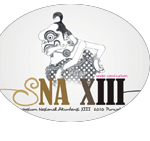Download Jurnal Akuntansi SNA 13 – AKPM 21 >>EKSPLORASI KINERJA PASAR PERUSAHAAN: KAJIAN BERDASARKAN MODAL INTELEKTUAL (Studi Empiris pada Perusahaan Keuangan yang Terdaftar di Bursa Efek Indonesia)
Ni Wayan Yuniasih
Dewa Gede Wirama
I Dewa Nyoman Badera
ABSTRACT
Intellectual capital is believed to be a contributing factor to companies’ performances and values. Several studies have been carried out on the influence of this capital to a company’s performance. However, the results still show some inconsistency. Therefore, this study aims at re-evaluating the influence of intellectual capital through the addition of ownership structure as a control variable. Ownership structure needs to be controlled since,in Indonesia, it is likely to be concentrated due to the low rate of investor protection.
Intellectual capital is measured by the VAIC method, while the market performance is determined by the price to book value ratio. The sample is financial companies listed on Indonesian Stock Market during the 2004-2008 periods. The result of the analysis fails to support the hypothesis that intellectual capital is associated with firm’s values. The result probably is an indication that market is incapable to assess the value of a company’s intellectual capital because it has no standardized measure and the limited quantitative disclosure regarding intellectual capital. …..
Keywords: intellectual capital, value added, ownership structure, market performance
Intellectual capital (intellectual capital) is an emerging topic in recent years. In Indonesia, the phenomenon of intellectual capital (IC) began to flourish, especially after the advent of Statement of Financial Accounting Standards (SFAS) No.. 19 (revised 2000) on intangible assets. According to SFAS. 19, intangible assets are identifiable non-monetary assets and has no physical form and held for use in produce or deliver goods or services, leased to other parties, or for administrative purposes (Indonesian Institute of Accountants, 2007).
Contrary to the increasing recognition of intellectual capital in driving firm value and competitive advantage, precise measurement of the company’s intellectual capital can not be determined. For example, Pulic (1998; 1999; 2000, 2003) did not directly measure the company’s intellectual capital, but propose a measure to assess the efficiency of value added as a result of the company’s intellectual ability (Value Added Intellectual Coefficient – VAIC ™). The main components of VAIC ™ can be seen from the company’s resources, namely physical capital (value added capital employed – VACE), human capital (value added human capital – VAHC), and structural capital (value added structural capital – VASC). …..
Download Link Jurnal Akuntansi SNA 13 – AKPM 21
Download + Preview: #docs/83782737
Download : #download/15597293/AKPM_21.rar.html

